Porsche’s GT department is the superglue that connects the company’s road and racing cars. Since 1999, its vehicles have consistently set the benchmark against which others are judged, earning it plaudits from the press and a cult following among enthusiasts. Go to a Touristenfahrten track day at the Nurburgring and every second car is a 911 GT3.
That reputation looked to be under threat when, in 2021, the GT department revealed its first SUV. Yet against the odds, the 640hp V8-powered Cayenne Turbo GT was brilliant – even more thrilling to drive than a Lamborghini Urus or Aston Martin DBX707. My review concluded: ‘While we all recognise the inherent contradictions of a track-focused off-roader, I found it impossible not to enjoy the Cayenne Turbo GT. It’s both deadly serious and very silly, all at the same time. Proof, perhaps, that Germans do have a sense of humour.’
Now the hard-working folk of Weissach will be in the firing line once again, as GT launches its first EV. Priced at £189,200, the Taycan Turbo GT propels the now-familiar electric saloon into hypercar territory, with a ferocious 1,108hp making it the most powerful production Porsche ever. However, the flagship Taycan needs more than just prodigious power to be worthy of a GT badge…
And that’s a wrap
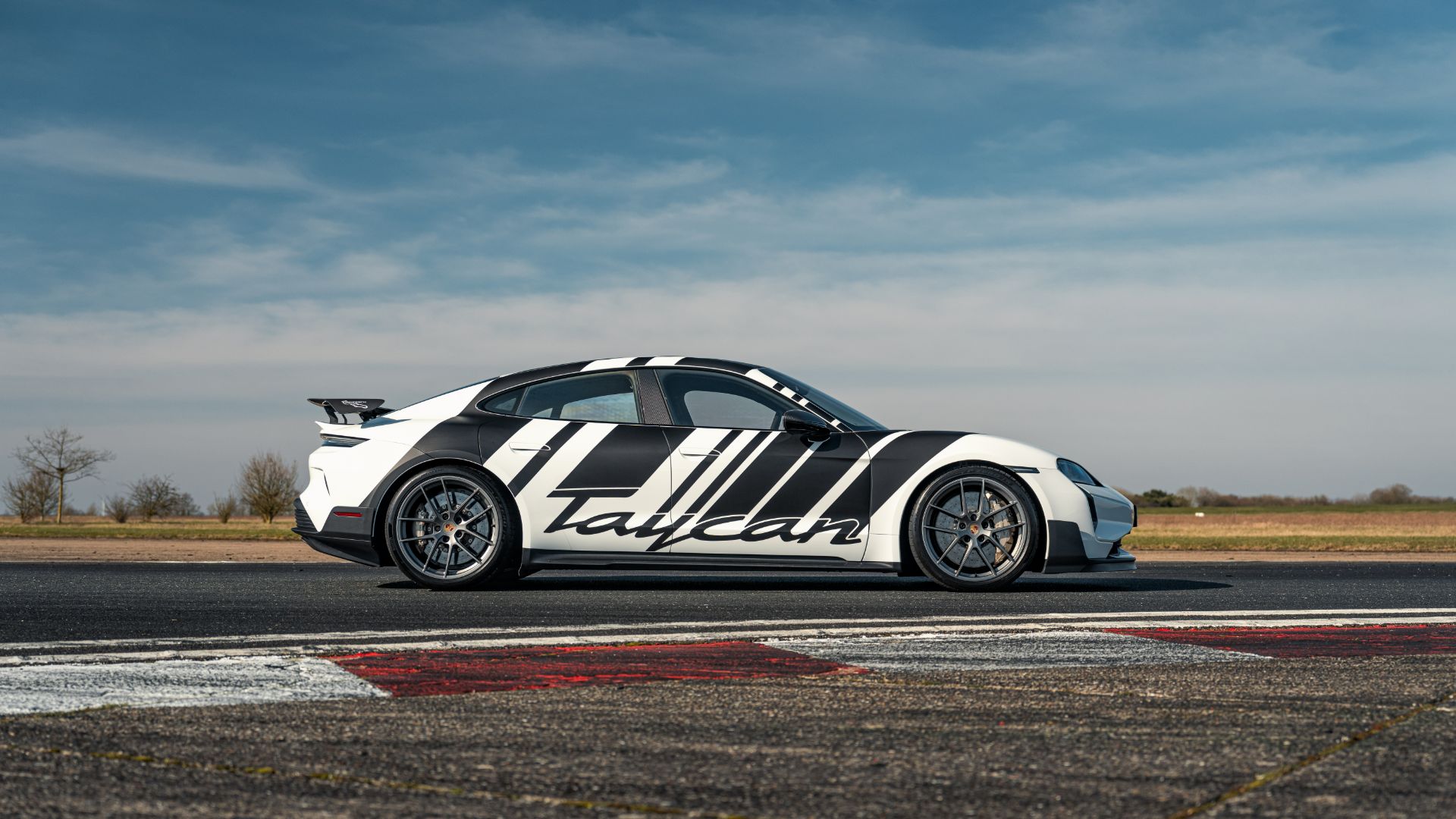
First things first: the zebra stripes aren’t compulsory. They’re part of the ‘Taycan Design Vehicle Wrap’ that will cost you, ahem, £8,239. Maybe just spend the money on a couple of nice holidays instead?
By contrast, the Weissach Package fitted here is actually a no-cost option. What’s the difference? Well, a standard Turbo GT has four seats, weighs 2,290kg, blasts from 0-62mph in 2.3 seconds and can reach 180mph. Opting for the Weissach Package means the back seats are binned, saving a further 70kg, shaving 0.1 seconds off the dash to 62mph and adding 10mph to the top speed.
In truth, the changes go deeper than the most obvious one: replacing the rear bench with a carbon fibre cover. Porsche also saves precious grams with forged alloy wheels, lightweight glass and less sound insulation, and by deleting the Sport Chrono clock on the dashboard, the rear audio speakers, the boot mat and the electric motor to open the charging flap.
Lastly, there’s a new front diffuser, more sculpted underbody and fixed rear wing, which increase total downforce to 220kg. The trade-off is additional drag: a coefficient of 0.31, versus a slippery 0.22 for the Taycan Turbo S.
Springing into action
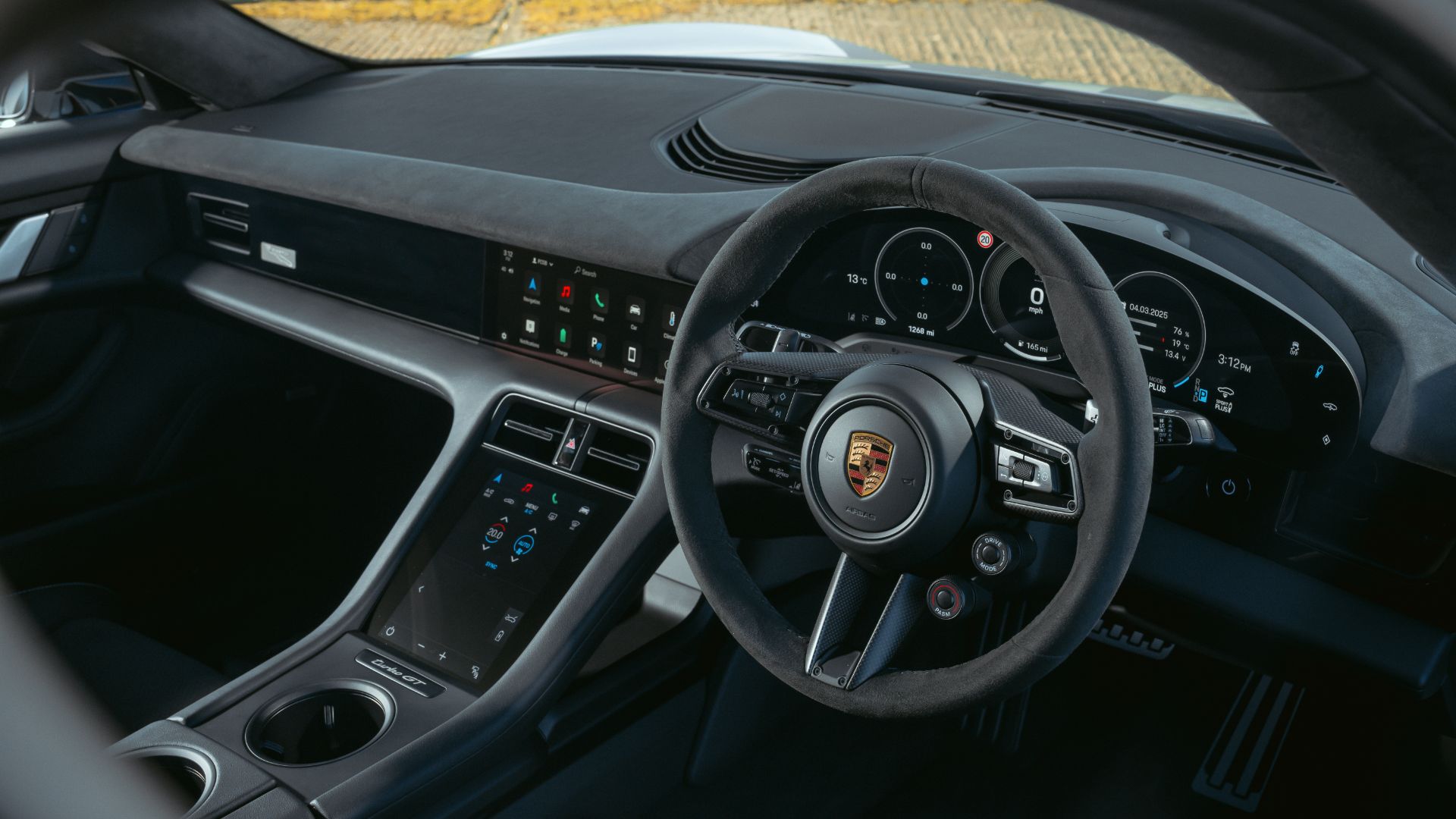
The gains might be incremental, but on a racetrack they really add up. Porsche development driver Lars Kern posted a time of 7min 7.55sec around the Nurburgring in a Weissach Package car – a scorching 26 seconds quicker than his record lap in a Taycan Turbo S. It makes the Turbo GT officially the fastest four-door saloon around the Nordschleife.
All that oomph comes courtesy of a 105kWh battery (97kWh usable) and an electric motor to drive each axle. Maximum power of 1,108hp is only available for two seconds using launch control. Most of the time, you must ‘make do’ with 789hp – or 952hp for 10 second bursts when you select Attack Mode (essentially a racing-style ‘push to pass’ function).
The Taycan’s twin-chamber air suspension features a recalibrated version of the Active Ride system – also used on the Audi RS E-Tron GT Performance – which proactively counteracts body-roll, along with acceleration squat and brake dive, to ‘ensure an almost perfect connection to the road’. The brakes themselves are PCCB carbon-ceramic discs, with lightweight calipers painted in natty Victory Gold.
Driving the Taycan Turbo GT
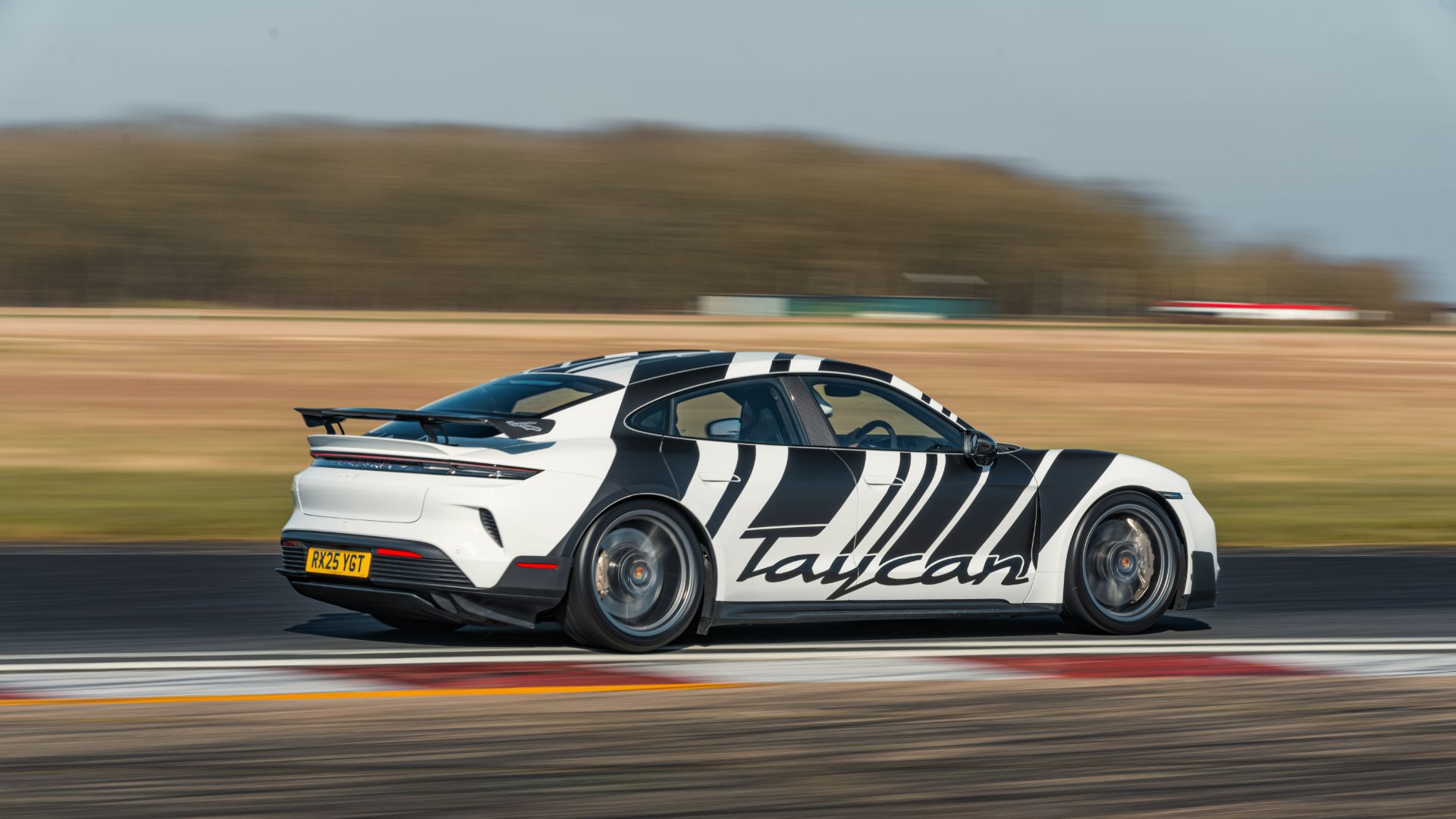
A car with opening back doors and no rear seat does seem a bit silly, but nobody will buy a Turbo GT as their daily-driver, or indeed to show off their eco credentials. This is the GT department flexing its muscles and showing what an EV is capable of – and viewed through that lens the ultimate Taycan makes a sort of sense. Indeed, its steely focus is arguably worthy of a Porsche with an RS suffix.
It starts with carbon fibre 918 Spyder seats that lock you in position, then continues with a soundtrack that doesn’t filter out the click of actuators, the whoosh of air springs or the whine of powerful electric motors. What you lose in typical EV refinement, you gain in a closer, more visceral sense of connection with the car.
The Turbo GT is what Richard Parry-Jones, the late engineer who made a generation of Fords great to drive, might have called a ‘50-metre car’. In other words, the lucidity of its steering and quality of its damping are apparent within the first 50 metres of driving. Just like Porsche’s more familiar GT offerings, it immediately feels like a precision instrument.
Wrapped in grippy Race-Tex (Stuttgart’s version of Alcantara), the wheel is calm yet full of feedback. And the way Active Ride manages and mitigates a still-hefty 2.2-tonne kerb weight, without making you feel detached from the experience, is seriously impressive. Seven-figure hypercars aside, the Taycan was already the best EV to drive, but the Turbo GT ratchets it up a couple of notches. Across country, it has the pace and sure-footedness to worry a 911 Turbo S, and leave less accomplished supercars flailing in its wake.
Accelerating your senses
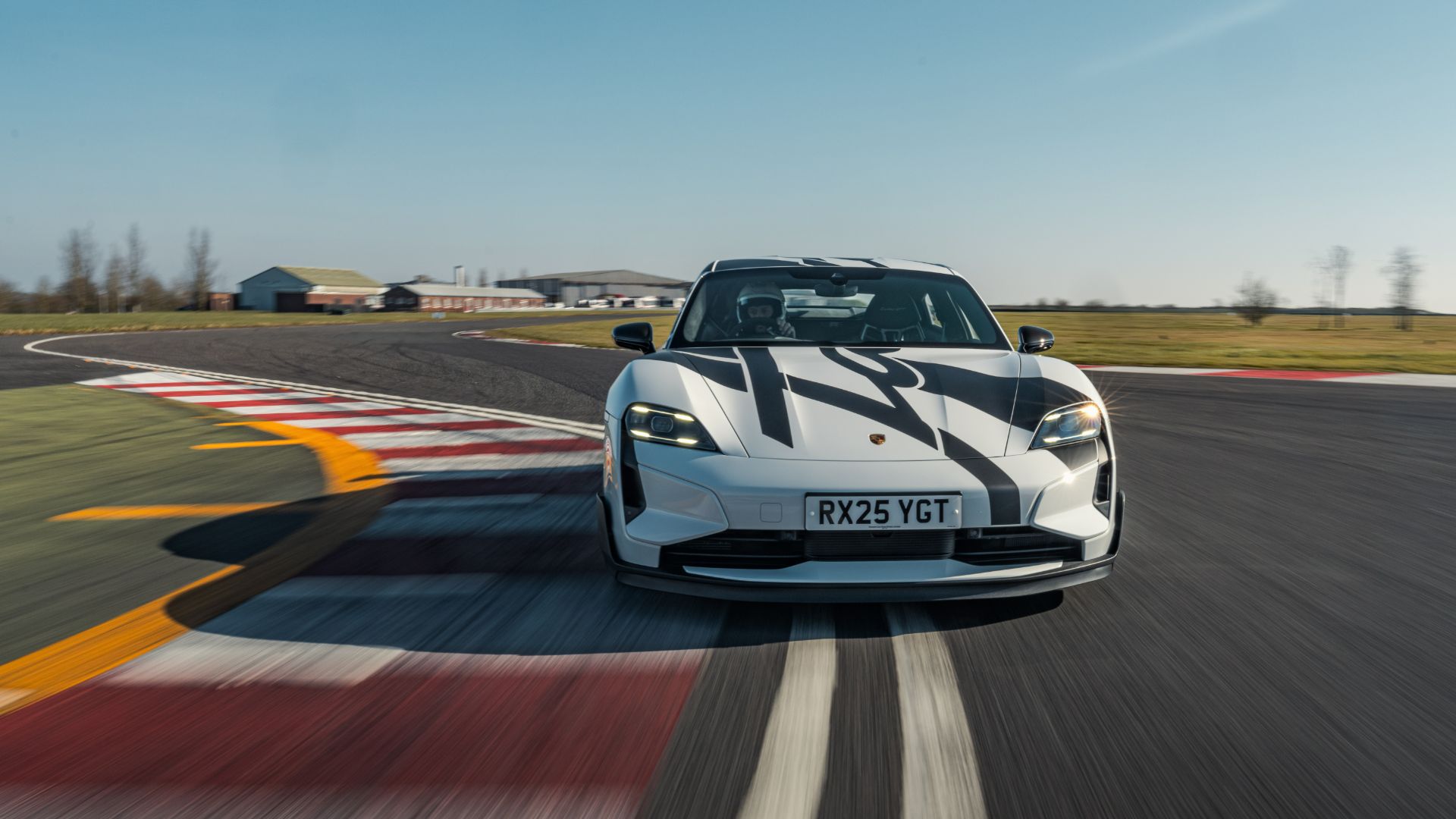
Unlike some electric cars, then, the Taycan isn’t only fast in a straight line. Yet my abiding memory is one of raw, violent speed that can be summoned in an instant. It makes even a conventionally fast car – a 911 GT3, for example – feel a tad lackadaisical. Your brain struggles to keep up.
The numbers don’t tell the whole story, but they are remarkable. Try 0-100mph in 4.4 seconds, 0-124mph (200kph) in 6.4 seconds or 49-74mph (80-120kph) in 1.1 seconds. Sure, that’s more performance than you can use responsibly on the road, but the Turbo GT’s overtaking ability really does feel like a secret weapon. When a gap opens up, it swats away lesser traffic without breaking a sweat.
Attack mode feels a bit gimmicky, with its pulsing 10-second countdown on the driver display, and even the chassis wizards of Weissach can’t completely disguise the Taycan’s weight. For all the processing power at work, though, it never feels like you are playing a computer game. A sense of connection between the car and driver is always there.
Verdict: Porsche Taycan Turbo GT
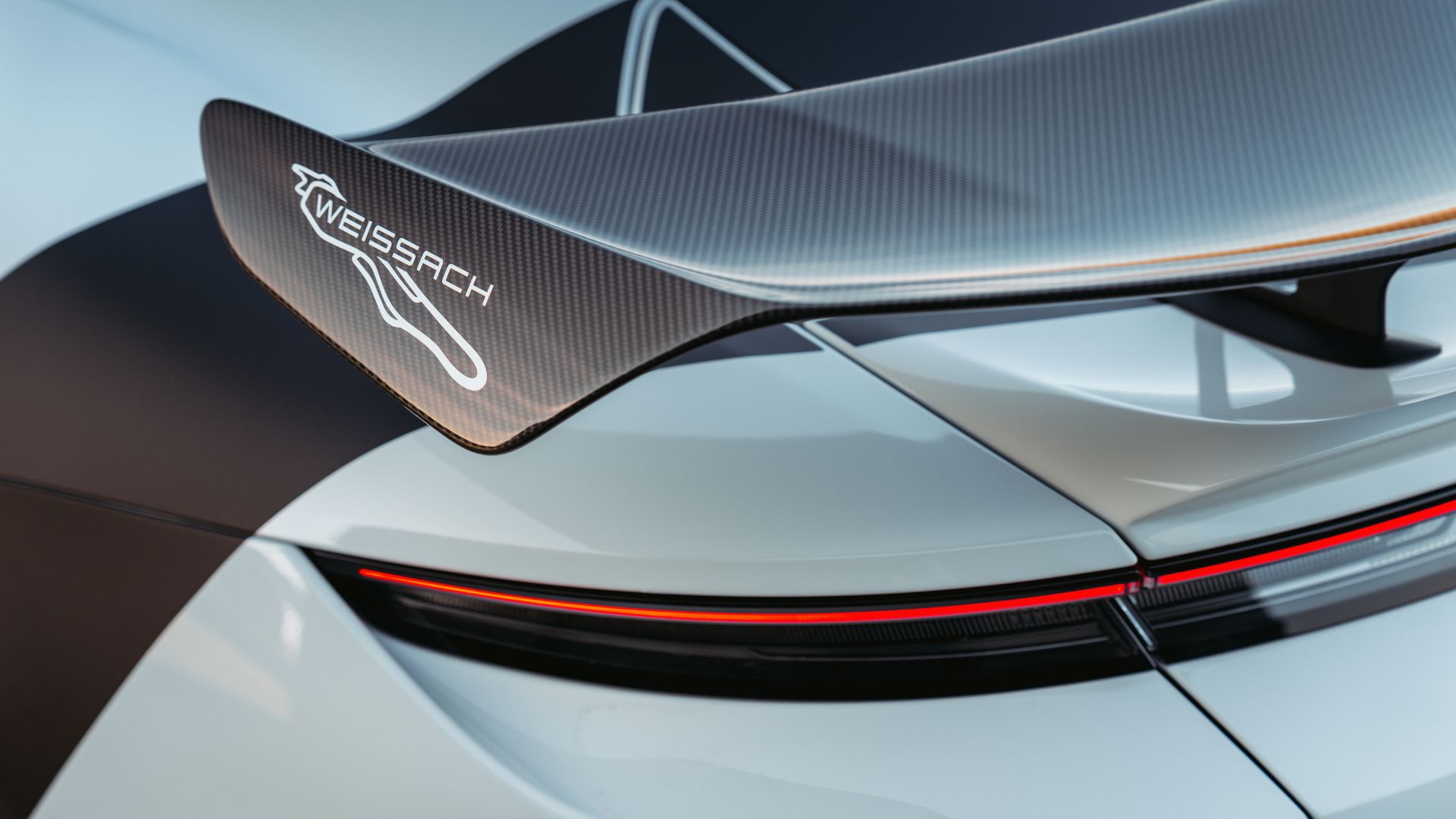
In isolation, the Turbo GT is hard to recommend. It costs more than twice the price of an entry-level Taycan, and £27,000 more than a Turbo S. It’s also £31,000 pricier than a new 911 GT3, which is ultimately a more engaging driver’s car – despite its sizeable deficit of power and speed. Like all luxury EVs, you can expect the ultimate Taycan to be hit heavily by depreciation, too.
Cars such as this are rarely bought in isolation, though. As part of a collection, the Taycan Turbo GT performs feats that no other Porsche can – and with the Mission X electric hypercar seemingly cancelled, it is likely to stay that way. This is an occasional adrenalin hit, a formidable track-day toy or a talking point at Cars and Coffee gatherings.
The Porsche purists won’t like it, but so what? Enthusiasm for cars is a broad church, and not everybody wants a GT-badged 911. Although, for the record, all of us here at Motoring Research emphatically still do.
ALSO READ:
Hammond and May race electric plane in ultimate Porsche Taycan
